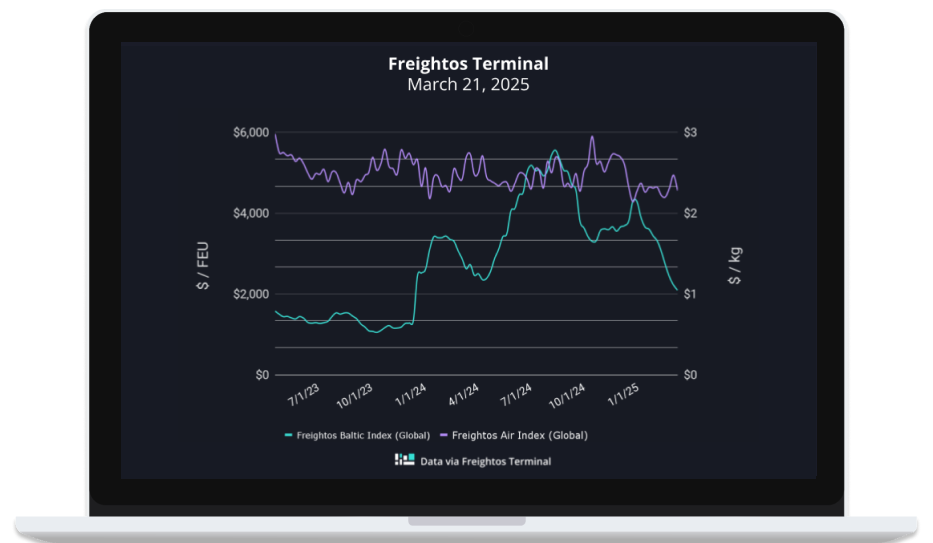Apollo Global Management forecasts a severe U.S. recession triggered by recent tariffs, which will lead to widespread layoffs in the trucking and retail sectors amid rising economic uncertainty.
The report, available on Apollo’s website, paints a grim scenario:
The trucking industry, critical to U.S. logistics, faces significant challenges as tariffs disrupt trade, particularly with China. A sharp decline in container ship voyages from China is expected to reduce freight volumes, thereby lowering demand for trucking services. Imports account for an estimated 20% of U.S. trucking volumes, so a decline in imports will have a significant impact on the industry. With fewer goods to transport, carriers will face reduced workloads and underutilized fleets, forcing them to cut labor costs.
Apollo predicts that domestic freight activity will sharply slow by mid-May, with mass layoffs likely to follow as firms strive to maintain financial stability. The slowdown in trucking will put a lot of pressure on trucking companies that have been dealing with the Great Freight Recession, one of the longest and deepest downturns in history.
The retail sector is also bracing for substantial layoffs. Tariffs will cause supply chain disruptions, leading to inventory shortages, especially for goods from China. The decline in container shipments will leave retailers struggling to stock products, as longer lead times further complicate inventory management. Retailers may need to find alternative suppliers or reduce product offerings, both of which present challenges.
Retailers also face declining consumer confidence driven by economic fears and tariff-induced inflation. Record-low consumer confidence scores reflect cautious spending, particularly on non-essential items, resulting in reduced store traffic and sales. Companies like Chipotle and Southwest Airlines have noted that consumers are saving more due to economic concerns. Rising credit card delinquencies and minimal payments indicate financial strain among consumers, further reducing purchasing power and exacerbating retail sales declines. Apollo expects retailers to cut jobs in June, amidst declining demand and higher costs.
Apollo’s broader economic outlook highlights a sharp decline in corporate spending, with new orders falling and inventories rising before tariffs took effect. Companies are lowering earnings forecasts and cutting investments due to a gloomy economic outlook, increasing the likelihood of layoffs across other industries.
The tariff-driven slowdown could lead to stagflation—stagnant growth combined with high inflation—according to Apollo’s analysis. Unlike typical recessions, where falling demand reduces inflation, trade disruptions are expected to drive up costs. Federal Reserve surveys indicate rising prices across supply chains, squeezing consumer purchasing power as incomes stagnate. Low consumer and business confidence, coupled with cautious spending, heightens the risk of stagflation.
Declining consumer confidence is mirrored by reduced corporate spending and investment. As firms anticipate weaker demand, they are scaling back capital expenditures and revising earnings downward, reinforcing economic stagnation. This response reflects both immediate cost pressures and a longer-term adjustment to a trade-restricted economy.
Apollo warns that rising prices and sluggish growth will heavily burden businesses and consumers. This stagflation scenario poses policy challenges, as traditional monetary tools may struggle to curb inflation while supporting growth. Strategic interventions are needed to mitigate the impact on vulnerable sectors and communities.
Apollo’s forecast paints a grim picture for the U.S. trucking and retail industries. Tariffs are disrupting supply chains and consumer behavior, putting both sectors at risk. Layoffs are often viewed as a necessary step to manage rising costs and minimize losses. Apollo’s analysis serves as a critical warning, urging strategic preparations to navigate the impending economic storm.
The post Mass layoffs in trucking and retail coming – Apollo appeared first on FreightWaves.








